Persons of migrant background are disproportionately represented among recipients of family benefits and vocational training assistance
The share of foreign-language speakers is disproportionately large among persons receiving an unemployment or family benefit from Kela. This is in contrast to such benefits as pensions and reimbursements for prescription drug expenses, where their proportional share is smaller. The number of benefit recipients with a migrant background largely mirrors their growing share of the Finnish population.
A total of 496,000 foreign-language speakers were living in Finland at the end of 2022. This is more than twice than in 2010, when there were 224,000 of them. Foreign-language speakers made up about nine percent of the Finnish population in 2022.
The share of foreign-language speakers among recipients of Kela benefits varies by benefit scheme. In some schemes such as unemployment and family benefits, their share is disproportionately large compared to their fraction of the population, while in certain other benefit programmes, such as pensions and reimbursements for prescription drug expenses, their share among the recipients is comparatively smaller.
Foreign-language speakers are defined as persons who speak natively a language other than Finnish, Swedish or Sámi.
Foreign-language speakers are overrepresented among recipients of unemployment benefits
In 2022, a total of 315,000 persons received unemployment benefits. This includes everyone who received any of the unemployment-related benefits paid by Kela at any point during the year. Eighty-one thousand or 26 percent of them were foreign-language speakers.
Between 2010 and 2022, the share of foreign-language speakers among unemployment benefit recipients more than doubled. The number of benefit recipients has increased somewhat faster than their share of the general population.
According to Signe Jauhiainen, a research manager at Kela, the large share of foreign-language speakers among recipients of Kela unemployment benefits demonstrates their weaker position in the labour market. “They are more likely to be unemployed, and many are only just entering the labour market”, she says.
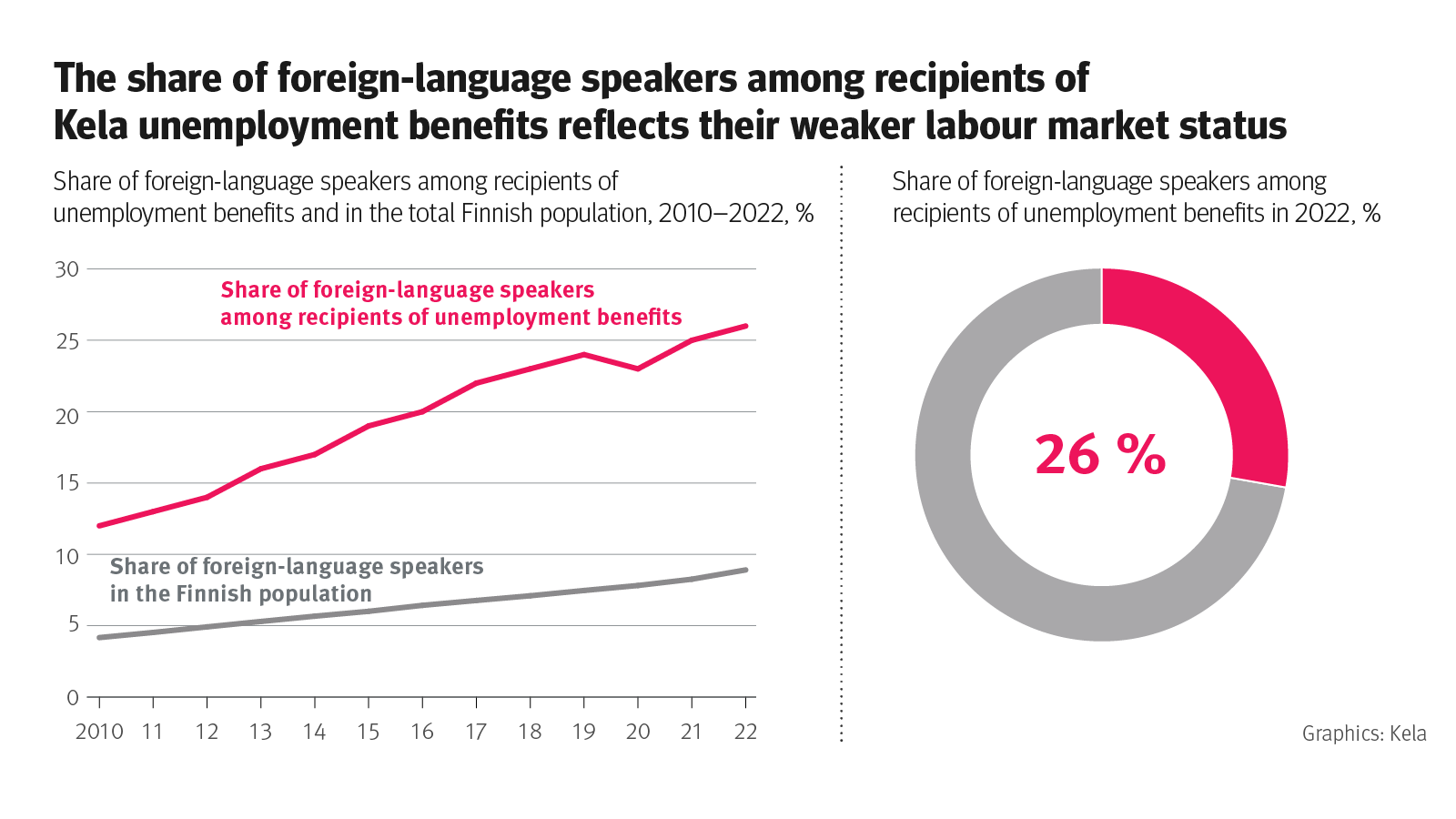
Recipient totals for unemployment benefits grew in the first half of the 2010s, both among foreign-language speakers and others. Since 2016, the pace of increase in foreign-language speakers drawing unemployment benefits has slowed down, while the number of unemployment benefit recipients who are native speakers of Finnish, Swedish or Sámi has declined. There was a sharp spike in unemployment in 2020 as a result of COVID-19. It is visible also in the Kela statistics.
Native speakers of Finnish, Swedish or Sámi make up the majority in such programmes as rehabilitative work activity, work try-outs, job search training and career counselling. Foreign-language speakers on unemployment are most likely to receive benefits on the grounds of self-motivated study or labour market training.
According to Signe Jauhiainen, unemployment benefits are often a form of integration support. “They may provide economic security for example while learning Finnish or acquiring vocational qualifications”, she says.
More than one in ten family benefit recipients are foreign-language speakers
Child benefits were paid to a total of 533,000 persons in 2022. Nearly 71,000, a little over 13 percent, of them were foreign-language speakers. The number of child benefit recipients speaking Finnish, Swedish or Sámi has decreased by 64,000 since 2010, while the number of foreign-language speakers has doubled, increasing by 35,000. Overall, the number of child benefit recipients has decreased by about 29,000 since 2010.
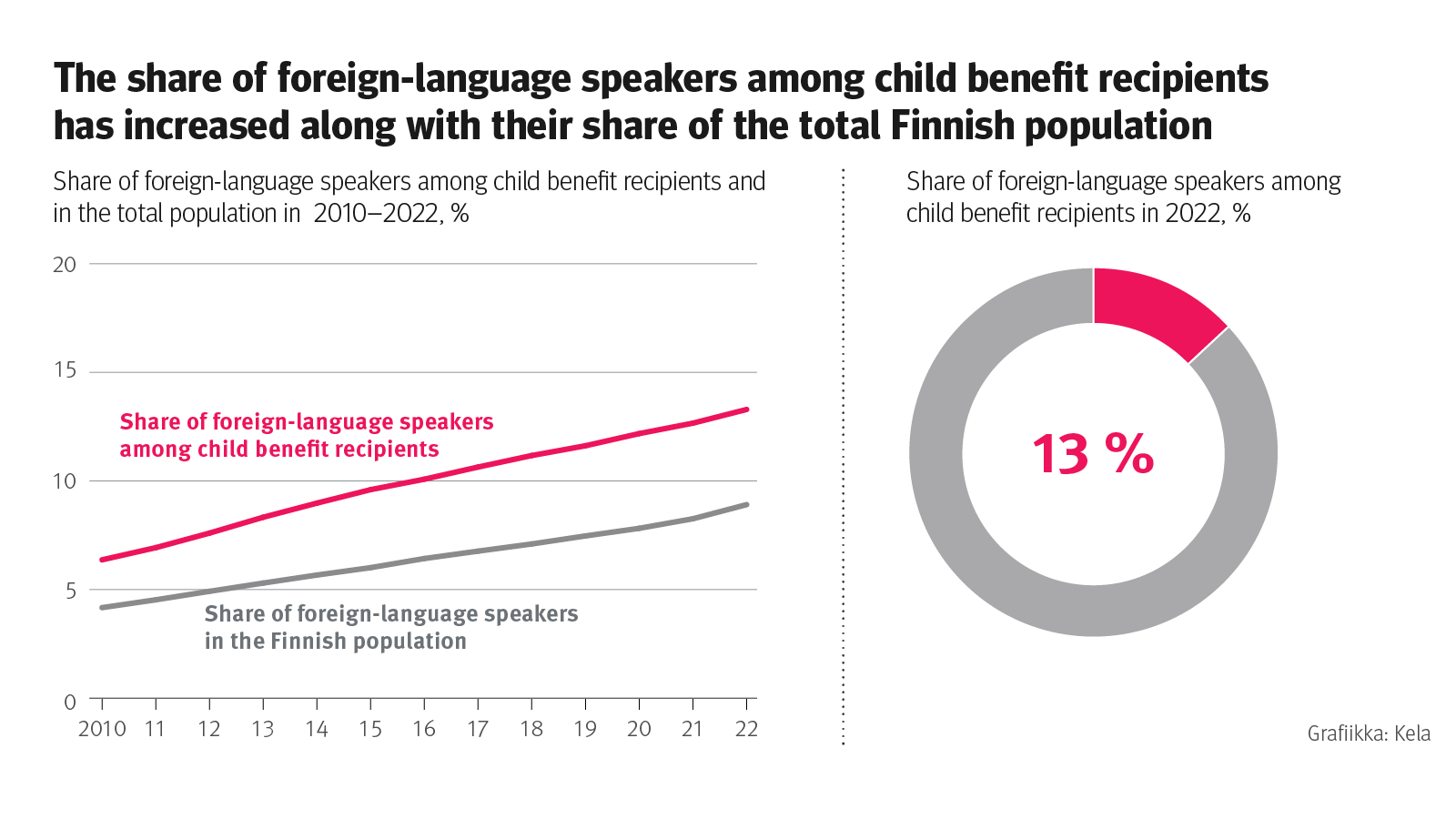
Foreign-language speakers also account for a little over 13 percent of parental allowance recipients. The number of recipients speaking Finnish, Swedish or Sámi decreased 26,000 from 2010, while the number of foreign-language speakers increased by 8,000 (about 80 percent). The overall number of recipients declined by about 18,000 from 2010.
“The foreign-language population has a younger age structure than the rest of the population”, Signe Jauhiainen says. “Foreign-language speakers are equally as likely to receive family benefits as speakers of Finnish, Swedish or Sámi.”
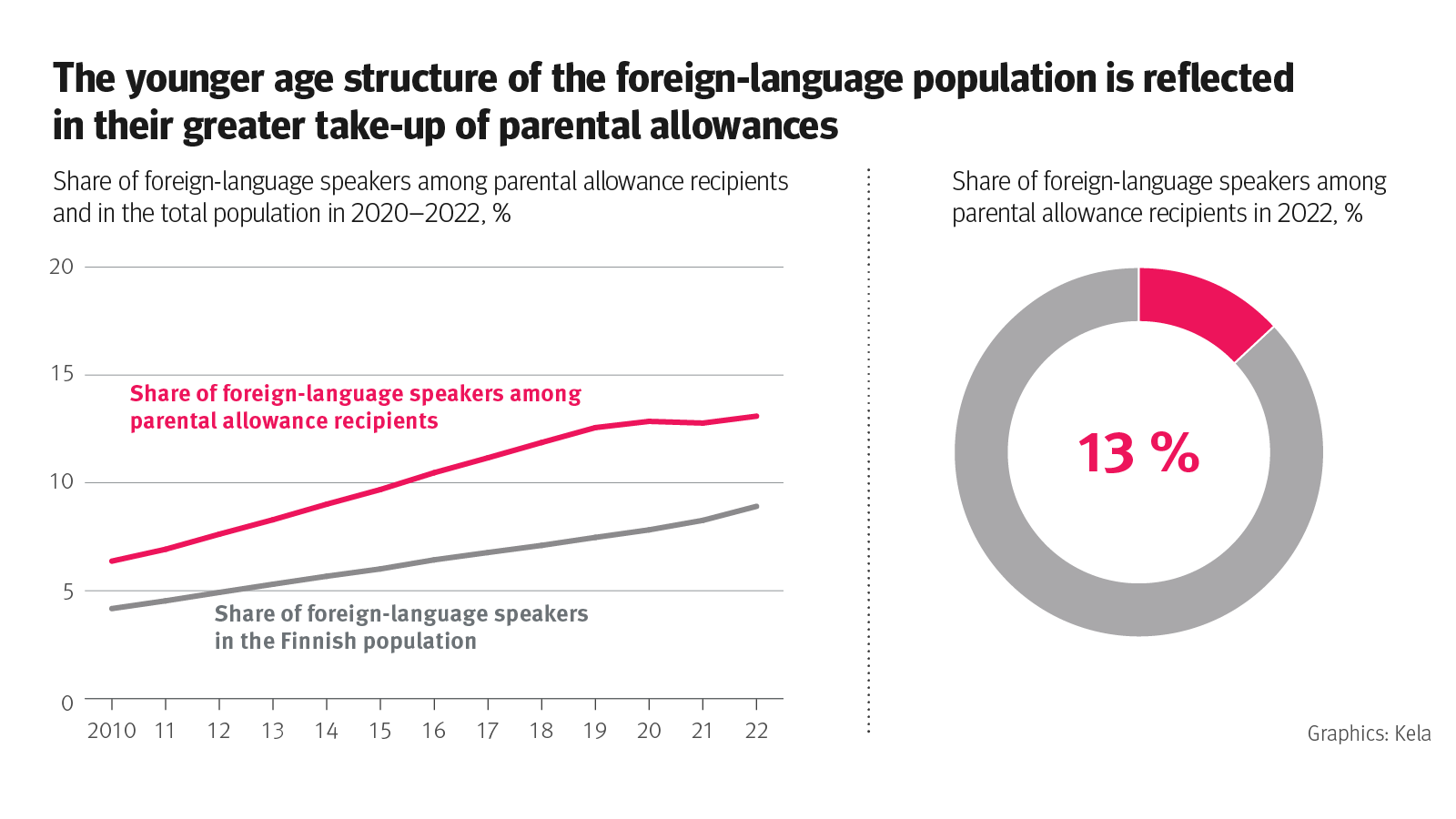
Foreign-language speakers underrepresented in pensions and reimbursements for prescription drug expenses
In 2022, Kela paid reimbursements for prescription drug expenses to more than three million people. Five percent of them (163,000) were foreign-language speakers, up from three percent in 2010. This means that foreign-language speakers’ share of all prescription drug reimbursement recipients has increased more slowly than their share of the Finnish population.
The number of foreign-language speakers as recipients of the reimbursements has climbed about 40,000 since 2010. Following the introduction of the EUR 50 initial deductible in 2016, the number of Finnish, Swedish and Sámi speakers decreased by nearly 800,000 persons. Since 2016, the number of foreign-language speakers among prescription drug reimbursement recipients has increased by about 21,000 persons, while the number of other recipients has decreased by about 24,000.
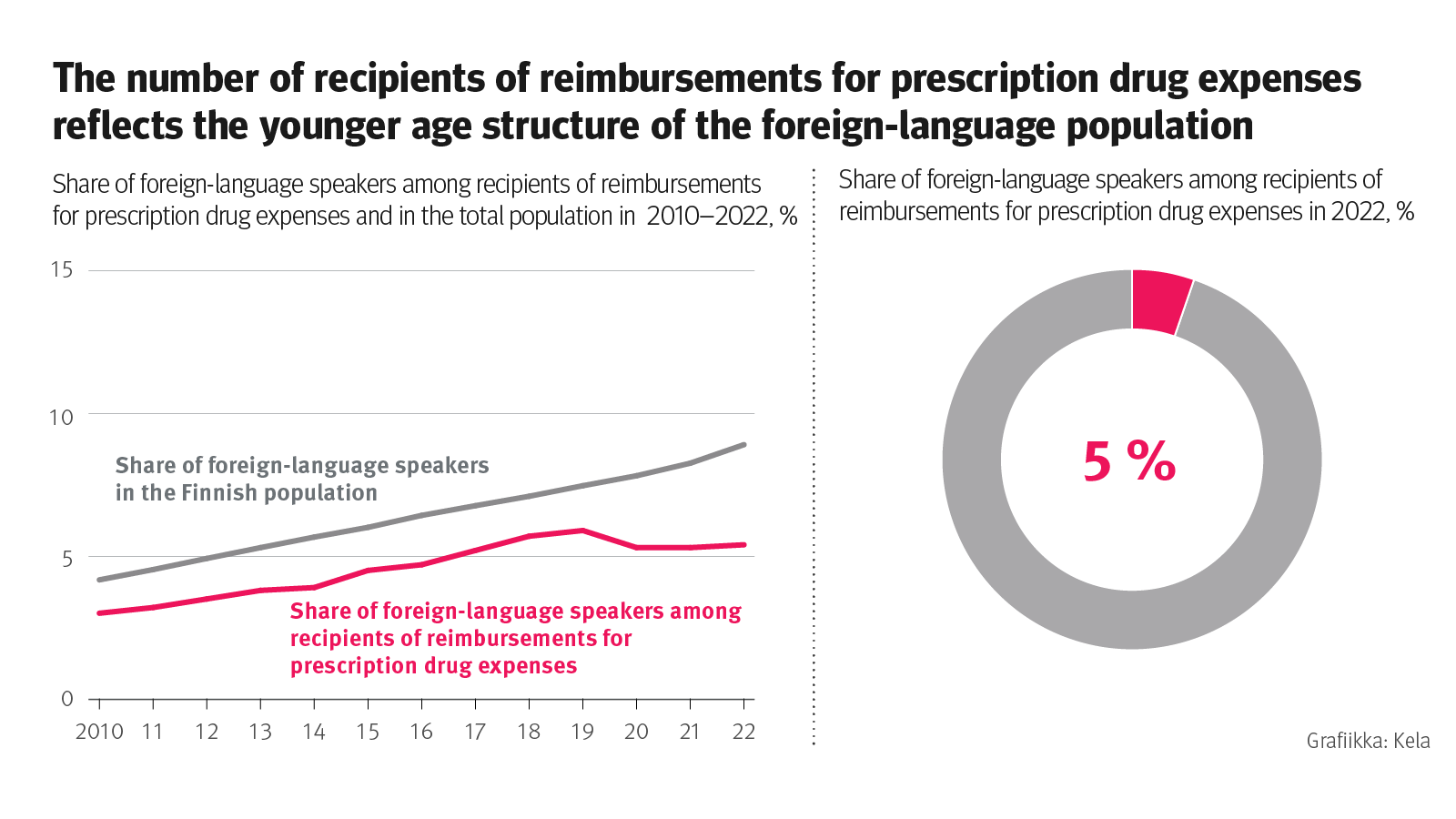
In December 2022, Kela paid national pensions and guarantee pensions to 561,000 individuals. Six percent (33,000) of them were foreign-language speakers. Ninety-four percent (527,000) were speakers of Finnish, Swedish or Sámi. In 2010, the share of foreign-language speakers was less than four percent.
The number of foreign-language speakers among recipients of a Kela pension has risen by 8,700 persons, or about one third, which is significantly less than the pace of increase in the share of foreign-language speakers in the general population. During the same period, the number of Finnish, Swedish and Sámi speakers among Kela pension beneficiaries has dropped by 117,000 persons, or 18 percent.
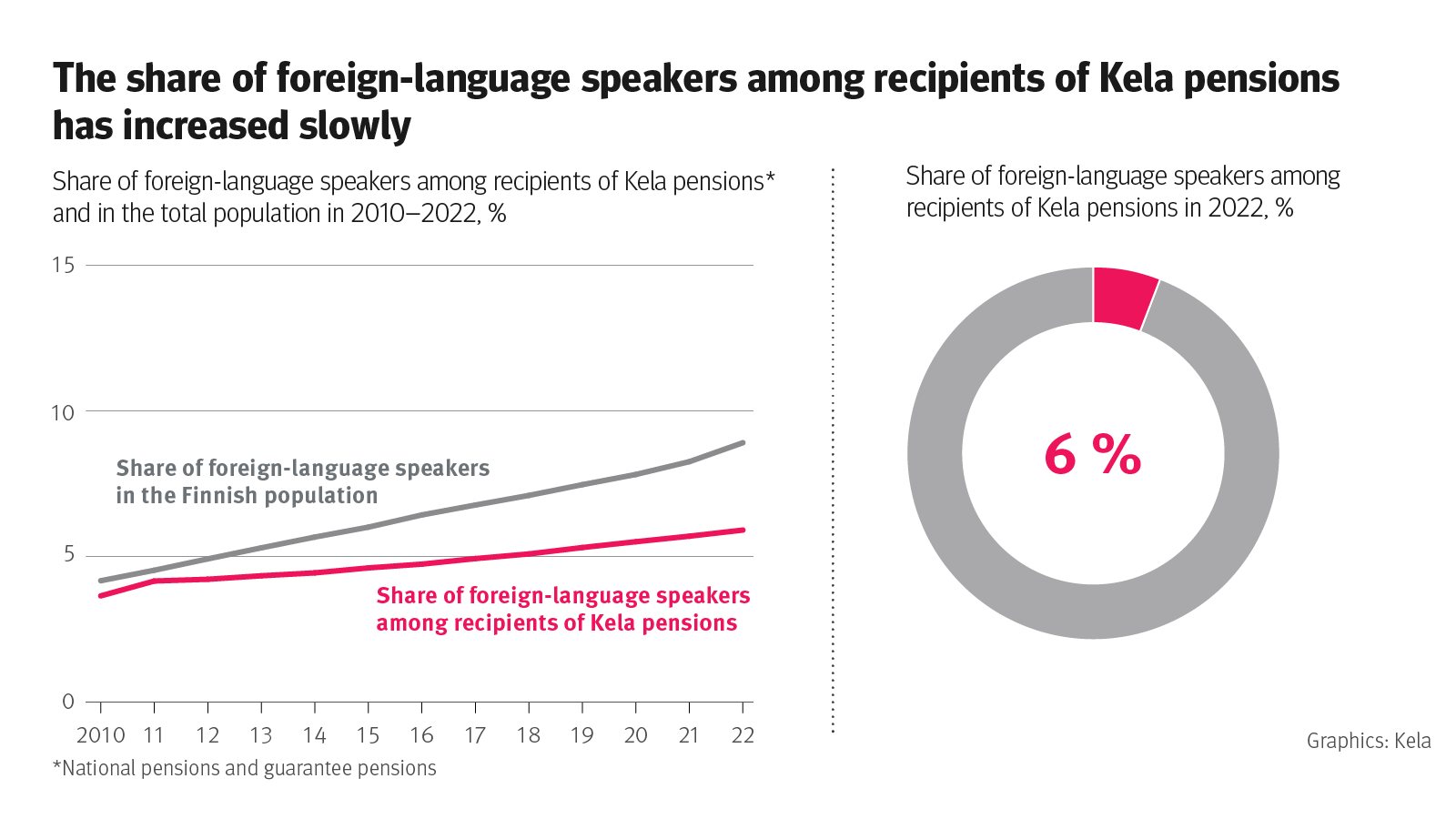
According to Signe Jauhiainen, the younger age structure among foreign-language speakers is also reflected in pensions and the reimbursements for prescription drug expenses.
Additional information
Signe Jauhiainen
Research Manager, Kela
signe.jauhiainen@kela.fi
Tel. 020 634 1958
Statistics on the benefits paid by Kela in respect of unemployment
Kela’s statistics on benefits for families with children
Finnish Statistics on Medicines
Statistics on the pensions provided by Kela